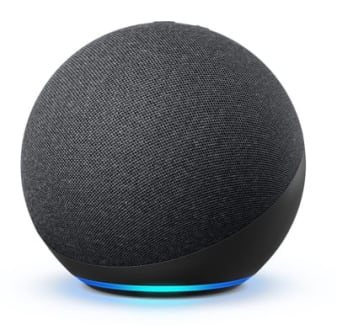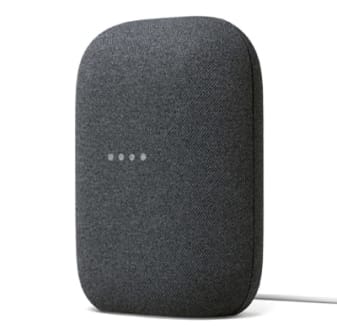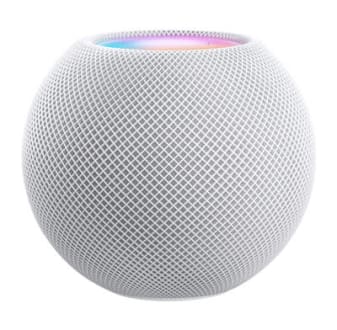
Smart Speaker Buying Guide
Since they were first introduced, smart speakers like the Amazon Echo and Google Nest Hub Max have been adept at providing weather reports and 2-minute cooking timers when summoned by voice command. But when it comes to playing music, they haven’t always been a match for the best-sounding nonsmart wireless speakers.
That has changed over time. It began with the introduction of the Amazon Echo Studio, Sonos One, and now-discontinued Google Home Max, speakers that not only are smart but also make sound quality a high priority. And that improvement has trickled down to less expensive models such as the latest Amazon Echo and Google Nest Audio, which now display a marked improvement in sound quality over their predecessors.
At the same time, smart speakers have been adding features such as rechargeable batteries, weather resistance, and touchscreens that allow you to view anything from a new empanada recipe to your favorite Taylor Swift music video.
In most ways, this shift in priorities is a bonus for consumers. You get more choices at a variety of prices. But it also makes selecting the right smart speaker more complex. Some background knowledge is important to help you choose the best smart speaker for your home.
Choose Your Smart Speaker Ecosystem
Think of a smart speaker as the hub in the larger digital environment of your household. With most models, you’re going to need a mobile app on a smartphone or tablet to perform basic setup. All the options work in concert with cloud-based artificial intelligence (AI), which controls everything from streaming music to the speaker’s ability to interface with other smart devices, ranging from smart lightbulbs to internet-enabled refrigerators.
For many of these tasks, it’s best to stick with one of the big three smart speaker platforms. So before you decide on a smart speaker, you should decide which digital pack you want to belong to: Amazon, Apple, or Google.

Amazon Echo
Amazon still enjoys something of a first-mover advantage with its voice-controlled digital assistant, Alexa. That means you’ll find a robust selection of third-party tasks—or “skills,” in Amazon Alexa parlance—that the speaker can perform and a wide array of devices that work with Alexa-powered smart speakers. Alexa-powered devices are also well-integrated in the Amazon Prime universe, with features such as the Amazon Music service and the online retailer’s extensive shopping tools.

Google Nest Audio
Google trails Amazon in terms of the size of its library of “actions” and number of compatible smart home devices. But some consumers find Google Assistant more intuitive to use—and Google’s formidable search capabilities help make its assistant even more helpful. The Google Home’s ability to integrate easily with Google devices, such as Chromecast streaming players, is another plus.

Apple HomePod Mini
Apple’s HomePod lacks the full Siri experience available on iPhones and other Apple devices, according to our testers. You’ll also find far fewer smart home devices that are compatible with the HomePod (which has now been discontinued), and the HomePod Mini delivers sound that falls short of competing devices’. On the other hand, if you’re deeply embedded in the Apple universe, with a subscription to Apple Music and a domicile filled with iPhones, MacBooks, and HomeKit devices, those might seem like worthwhile trade-offs.
What Your Smart Speaker Can Do
The defining feature of a smart speaker is the AI, but the “smart” in these products doesn’t actually require that much deliberation when you’re shopping.
In an attempt to gain market share (and, it should be noted, collect consumer data), Amazon and Google have been actively encouraging other manufacturers, such as Bose and Sonos, to build smart speakers that use their digital assistants. (By contrast, Apple keeps its platform to itself—you won’t find Siri on other companies’ smart speakers.)
The digital assistants on third-party smart speakers perform roughly the same as the ones on smart speakers made by Amazon and Google, according to our testers. Our labs find little or no difference, for example, in the devices’ ability to hear and respond to wake words and other commands, even in very noisy environments.
And, surprisingly, spending more on a smart speaker won’t make the device any smarter. A $50 Amazon Echo Dot is every bit as intelligent as the $350 Bose Home Speaker 500. That’s because the “brains” of a smart speaker don’t live in the device itself but in the cloud, on servers run by Amazon, Apple, or Google. And the lowest-priced devices have the same access as the most expensive ones.
More expensive models do tend to sound better, though. But here’s a trick. Let’s say you already have, or want to buy, a superb-sounding, nonsmart speaker—the Edifier S1000DB, for instance. You can add voice controls to it by pairing it with an inexpensive smart speaker.
In short, most smart speakers on the market are quite smart. Here are just a few of the cool things you can ask your smart speaker to do.
• Act as the world’s smartest intercom—summoning friends and family not only in your house but also anywhere a compatible device is connected.
• Interact with smart bulbs or a smart thermostat to make your room brighter or warmer.
• Make a phone call.
• Read you an audiobook.
• Set timers, alarms, and reminders.
• Tell you a joke.
• Tell you today’s weather.
More Choices in Smart Speakers
In the past few years, smart speakers have evolved into some distinct categories, and which one you choose largely depends on how you use the device.
Standard smart speakers like the basic Amazon Echo are designed to be used indoors and operate purely with voice controls. They need to be plugged into an electrical outlet, and they use WiFi connectivity.
In terms of quality, the least expensive home speakers, such as the Amazon Echo Dot and Apple HomePod Mini, are something of a mixed bag. On the one hand, they offer a lot of smart speaker functionality for the money. On the other, our testers find that their sound quality leaves a lot to be desired—they’re okay for podcasts or background music, for example, but not for serious music listening.
Moving up a bit in price, the Amazon Echo and Google Nest Audio sound substantially better than their predecessors. But if you’re going to listen to music—and you probably will—consider step-up models like the Amazon Echo Studio, Bose Home Speaker 300, and Sonos One, which offer better clarity, stronger bass, and more volume, along with that elusive sense that the musicians are in the room with you.
Portable smart speakers are a newer option. A number of companies, including Sonos and Ultimate Ears, have introduced smart speakers with rechargeable batteries, water-resistant enclosures, and Bluetooth connectivity for easy pairing to a smart phone or another portable device. These speakers need WiFi for their smart functions, so these functions won’t work away from home. But there’s much to be said for taking your smart speaker into the yard, where it can still receive a WiFi signal, and telling it to “turn the music up” when your favorite song pops up on a playlist while you’re busy working the grill.
Smart speakers with screens are available from Amazon and Google, among other companies. The screens can be a benefit if you want to, say, read a recipe or follow a chef whipping up the dish that you’re cooking. On the other hand, they take up valuable counter space on a kitchen counter (voice-only speakers can be stashed on a shelf), and their functions can be duplicated by a portable device such as a tablet, laptop, or smartphone.
Smart Speaker Brands
The smart speaker market is dominated by two tech companies—Amazon and Google—that haven’t been in the business of making consumer electronics for long. But increasingly, companies that are established in the wireless speaker market, such as Bose and Sonos, are making inroads.
Amazon leads the smart speaker category in market share, with myriad speakers using its Alexa digital assistant. Amazon has a broad lineup that stretches from the budget-priced Echo Dot to the fine-sounding Echo Studio. The company’s Echo Show models feature touchscreens, ranging from bedside models to larger ones designed to act as a focal point in the kitchen.
The tech giant entered the top end of the smart speaker market in early 2018 with its sleek, stylish, and now-discontinued HomePod. The company’s lone smart speaker is the more modestly priced HomePod Mini, which doesn’t perform all that well in our labs and carries a bit of an Apple tax.
Google has streamlined its audio-only smart speaker line, discontinuing the great-sounding Home Max in favor of the middle-of-the-road Google Nest Audio, in addition to a slight revamp of the inexpensive and cheerful Google Nest Mini. Google also has several smart screens, including one with sleep tracking.
Our testers find that Bose’s smart speakers offer solid performance and standout sound, as well as the versatility of being able to use either Amazon’s Alexa or Google Assistant.
Sonos’ smart speakers are nothing if not flexible. They all work with the company’s multiroom speakers, and the portable models can add Bluetooth capability to a whole-house Sonos system. They’re also platform-agnostic, so they work with either Amazon’s Alexa or Google Assistant, as well as accessing Apple content through AirPlay.



























